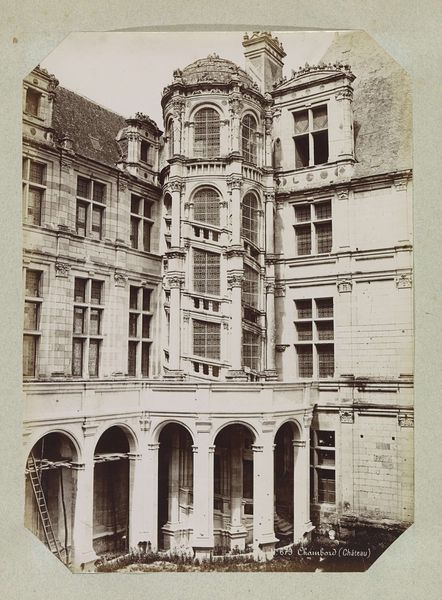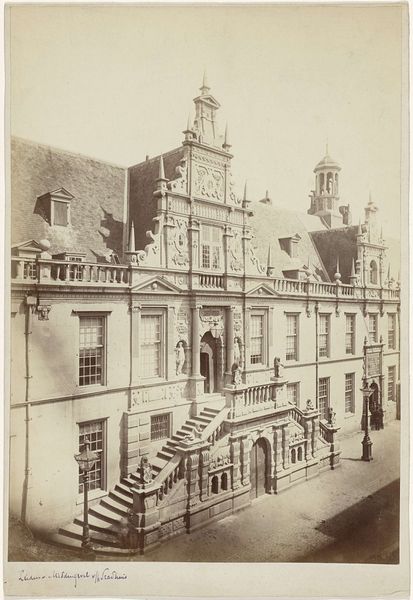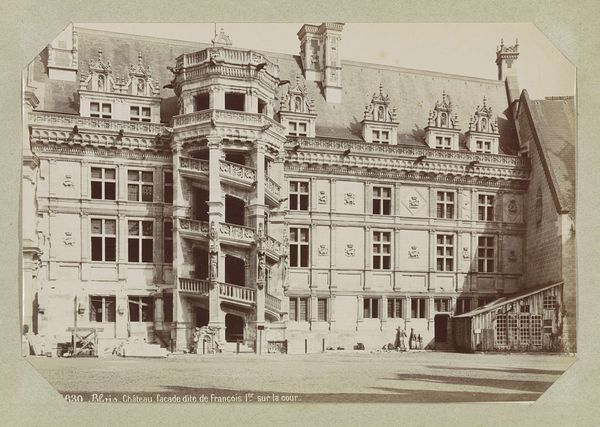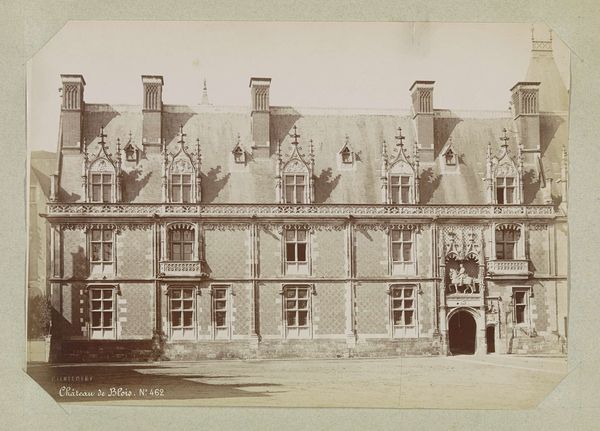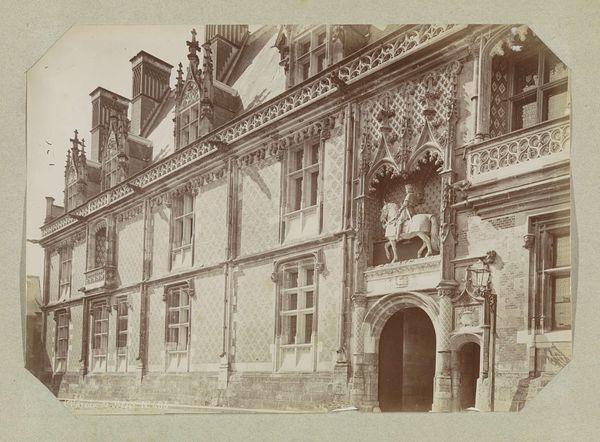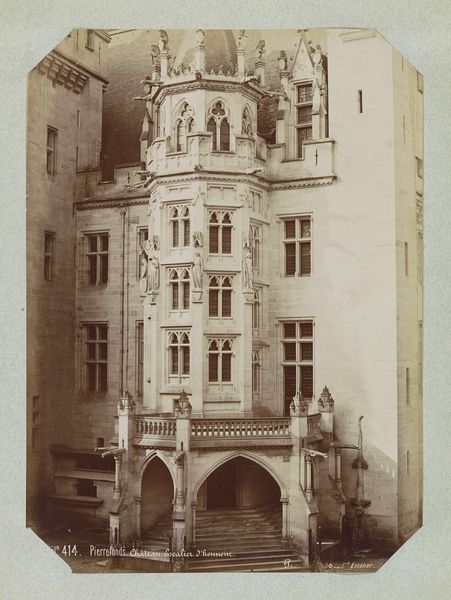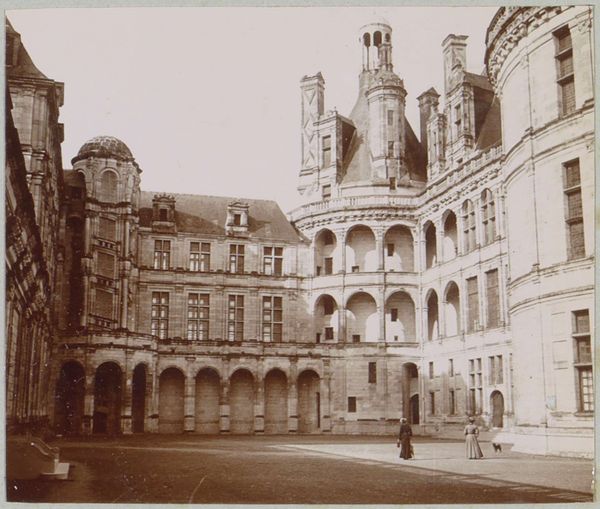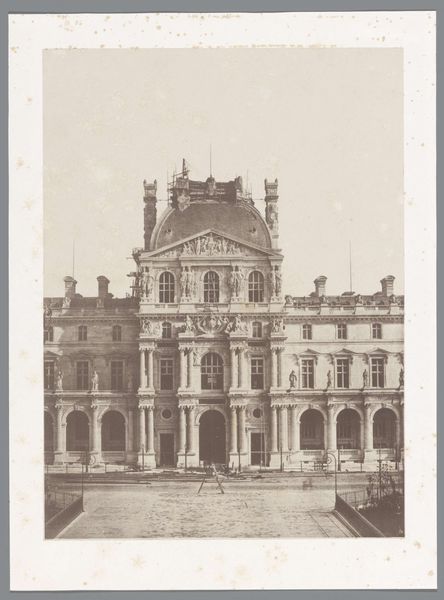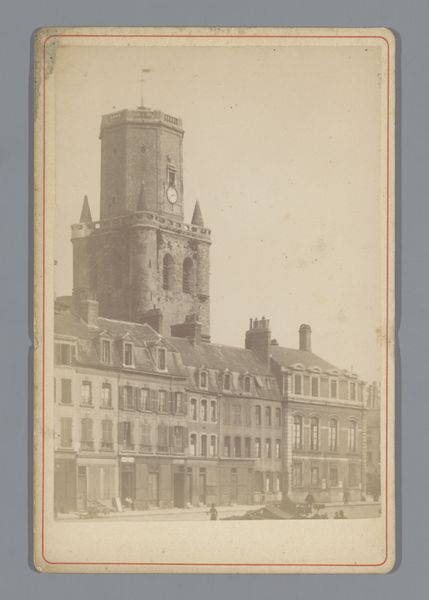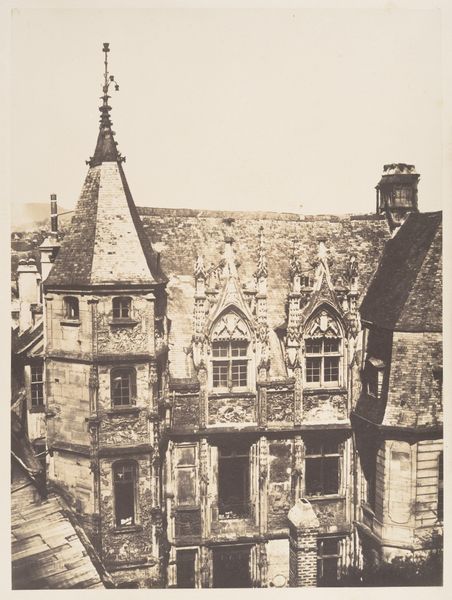
photography, architecture
#
photorealism
#
landscape
#
photography
#
19th century
#
architecture
#
realism
Dimensions: height 333 mm, width 253 mm
Copyright: Rijks Museum: Open Domain
Editor: This photograph, taken by Médéric Mieusement between 1880 and 1900, captures an exterior view of the Château de Chambord. The architectural detail is incredible. What do you see in this piece that perhaps I'm missing? Curator: The photograph offers a meticulous, almost obsessive, representation of power and history through architecture. But look closer, consider the cultural memory embedded in these stones. Chambord was a symbol of royal ambition, particularly that of François I. The building itself becomes an emotional landscape. Editor: So, it's not just about the beautiful architecture, but what it represents? Curator: Precisely. It's about the symbolic language. The imposing scale, the multitude of windows – they speak of grandeur, of surveillance, of control. Consider how these elements reflect the psychological weight of monarchy. Does the image evoke those emotions in you? Editor: It does. I feel a sense of awe, but also, a slight unease with that power. How do you think people viewing it then might have reacted? Curator: The late 19th century was a time of shifting power dynamics. The photograph, in its precise detail, could have been viewed with nostalgia for a fading era, or perhaps with a critical eye towards its opulence. Does the lack of human presence amplify these feelings for you? Editor: It does create a sense of emptiness, like a stage set waiting for actors. Thank you. I see the symbolism and emotional weight so much clearer now. Curator: And seeing these images helps us reflect on how these structures still speak to us, how cultural memory is reshaped and reinterpreted through art. A truly intriguing visual artifact.
Comments
No comments
Be the first to comment and join the conversation on the ultimate creative platform.

